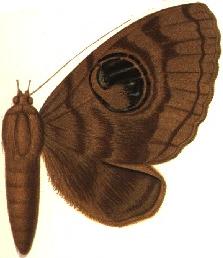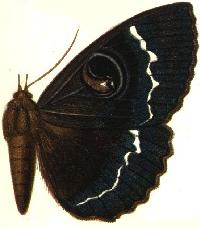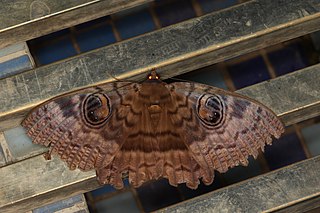
Mount Erebus is the second-highest volcano in Antarctica, the highest active volcano in Antarctica, and the southernmost active volcano on Earth. It is the sixth-highest ultra mountain on an island, and the second-highest in Antarctica. It has a summit elevation of 3,794 metres (12,448 ft). It is located in the Ross Dependency on Ross Island, which is also home to three inactive volcanoes: Mount Terror, Mount Bird, and Mount Terra Nova. The mountain was named by Captain James Clark Ross in 1841 for his ship, the Erebus.

HMS Erebus was a Hecla-class bomb vessel constructed by the Royal Navy in Pembroke dockyard, Wales, in 1826. The vessel was the second in the Royal Navy named after Erebus, the personification of darkness in Greek mythology.

The Mount Erebus disaster occurred on 28 November 1979 when Air New Zealand Flight 901 (TE901) flew into Mount Erebus on Ross Island, Antarctica, killing all 237 passengers and 20 crew on board. Air New Zealand had been operating scheduled Antarctic sightseeing flights since 1977. This flight was supposed to leave Auckland Airport in the morning and spend a few hours flying over the Antarctic continent, before returning to Auckland in the evening via Christchurch.

HMS Terror was a specialised warship and a newly developed bomb vessel constructed for the Royal Navy in 1813. She participated in several battles of the War of 1812, including the Battle of Baltimore with the bombardment of Fort McHenry. She was converted into a polar exploration ship two decades later, and participated in George Back's Arctic expedition of 1836–1837, the successful Ross expedition to the Antarctic of 1839 to 1843, and Sir John Franklin's ill-fated attempt to force the Northwest Passage in 1845, during which she was lost with all hands along with HMS Erebus.

The Lower Erebus Hut (LEH) is a permanent field facility located on Mount Erebus on Ross Island, Antarctica. The hut served as the seasonal base of the Mount Erebus Volcano Observatory (MEVO), run by New Mexico Institute of Mining and Technology (NMT). The installation comprises two huts, one kitchen and recreation building and one working and storage building.

Erebus is a genus of moths in the family Erebidae.

Erebus aerosa is a moth of the family Erebidae first described by Charles Swinhoe in 1900. It is found in Indonesia.

Erebus nyctaculis is a moth of the family Erebidae. It is found from Mindanao and Indonesia south to northern Australia.

Erebus macfarlanei is a moth of the family Erebidae. It is found in Queensland and from the Southern Moluccas and Indonesia to the Solomon Islands.

Erebus crepuscularis is a moth of the family Erebidae first described by Carl Linnaeus in his 1758 10th edition of Systema Naturae. It is found in Indonesia, New Guinea, Taiwan and the Australian states of Queensland and New South Wales.

Erebus variegata is a moth of the family Erebidae. It is found on the Solomon Islands and New Guinea.

Erebus intermedia is a moth of the family Erebidae. It is found in Asia, including the Bismarck Archipelago and Sulawesi.

Erebus gemmans is a moth of the family Erebidae. It is found in Asia, including China, India, Bangladesh, Bhutan, Nepal, Thailand, Burma, Malaysia, Taiwan, Sumatra and Borneo.

Erebus superba is a moth of the family Erebidae first described by Charles Swinhoe in 1908. It is found in the Indian state of Meghalaya and in Nepal.

Locharna strigipennis is a moth in the family Erebidae first described by Frederic Moore in 1879. It is found in the north-eastern Himalaya, India, China and Taiwan.

Erebus walkeri is a moth of the family Erebidae. It is found in Angola, the Comoros, the Democratic Republic of Congo, Ghana, Kenya, La Réunion, Madagascar, Malawi, Mauritius, Mozambique, Nigeria, Rwanda, the Seychelles, South Africa (KwaZulu-Natal), São Tomé & Principe, Tanzania, Gambia, Uganda, Zambia and Zimbabwe.

Erebus hieroglyphica is a moth of the family Erebidae. It is found from the Oriental tropical countries such as India, Pakistan, Sri Lanka, Bangladesh, Japan, China, Taiwan, Cambodia, Laos, Myanmar, Thailand, Vietnam, Indonesia, Philippines, Malaysia, Singapore, and Korea. The habitat consist of lowland forests.
Erebus glaucopis, the Himalayan blue owl-moth is a moth of the family Erebidae. It is found in Bangladesh, the north-western Himalayas, China, Nepal and Thailand.

Erebus pilosa is a moth of the family Erebidae. It is found in China and Taiwan.
Erebus purpurata is a moth of the family Erebidae. It is found on the Solomon Islands and New Guinea.









